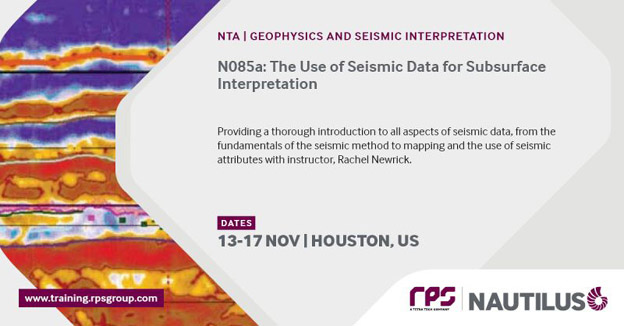
Date: 13 - 17 Nov. 2023
Start Time: 09:00 CST
Location: Houston
Instructor: Rachel Newrick
Business Impact: This course will add value for petrotechnical professionals and support staff by providing a practical knowledge and a working understanding of the techniques and concepts used in the seismic interpretation process.
This course provides a thorough introduction to all aspects of seismic data, from the fundamentals of the seismic method to mapping and the use of seismic attributes. This long-standing foundational seismic course has added value for new hires and those switching to a seismic-based role, as well as for geo-techs and petroleum engineers. The course makes use of “real-world” examples of producing fields and basins around the world.
Participants will learn to:
- Explain fundamental aspects of seismic wave propagation, diffractions, and reflection criteria.
- Compare 2D and 3D seismic acquisition techniques; evaluate key survey requirements necessary to achieve project objectives.
- Assess the importance of key seismic data processing steps including datum and statics corrections, velocity analyses, migration, and depth imaging.
- Contrast 2D and 3D seismic data benefits, recognize common imaging pitfalls.
- Explain how prospect risk factors can influence project objectives and interpretation workflows.
- Demonstrate practical interpretation skills; construct and use synthetic seismograms, perform well-seismic ties, 2D line correlation, horizon and fault identification, seismic picking and basic mapping.
- Compare seismic time-to-depth conversion techniques and recognize the advantages and disadvantages of different methods.
- Determine factors affecting seismic resolution at the reservoir scale.
- Differentiate the various types of seismic attributes available and select appropriate attributes for a given project.
- Demonstrate the relationship between mapping exercises on paper and modern workstation practices.
- Apply basic stratigraphic seismic interpretation skills including identification of major sequence boundaries, and also 3D stratigraphic slicing to map channel reservoirs.
Full details l KeyFacts Energy Industry Directory: RPS Energy l KeyFacts Energy news: Training
 KEYFACT Energy
KEYFACT Energy